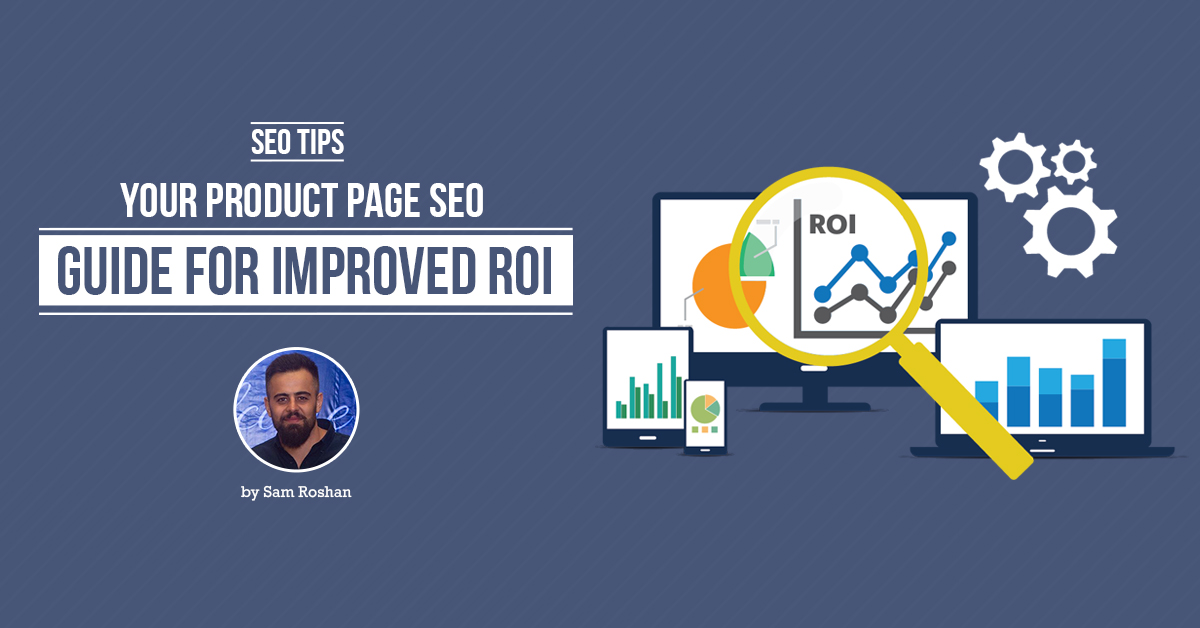![]() Posted by Cameron Francis
on
21 Jun , 2017
in
Uncategorized
Posted by Cameron Francis
on
21 Jun , 2017
in
Uncategorized

Maintaining a balanced Ecommerce product page SEO strategy is a challenging task. An ecommerce site should fulfil two objectives: a semantically structured website and creative content to attract the potential buyers. Ecommerce is a competitive industry.
Ecommerce product page SEO strategies
In this article, we shared some actionable product page SEO strategies to implement.
#1 The SEO Basics
Implement basic SEO strategy for every product page. Focus on the meta description, title tags (H1, H2, H3), long-tail keywords, product descriptions, alt tags, SEO-friendly URLs, headers, and relevant product images. Once the structure is final, go to Google Webmasters, and use the Structured Tool to markup the website.
#2 Information Architecture
Your product should not exist in isolation. The listed products are connected to a brand, and the first tenet of any brand building exercise is to display a uniformity in the tone and information convey process. The product descriptions should be written in a uniform tone that matches the intended brand perception. Hire a copywriter to create a variety of product descriptions samples for review and selection. Create unique product descriptions. Do not copy the descriptions from other websites as it will bring Google SERP penalty.
#3 Keyword Research
Advanced SEO strategies mandate digging into segmented demographic data to define potential keywords. Ecommerce ranking is not limited to focusing on a handful of keywords to rank for the homepage. Effort should be given on understanding the semantically influenced keywords with the potential to impact SERP. Sign up with a data analytics tool like Google Analytics or AHrefs to track keywords and their ranking in various geographical regions. Forget keyword density, focus on semantic searches.
READ: Choosing the Right Keyword for Your Website
#4 Schema Ratings
The product pages should follow specific Schema guidelines. Schema is a list of factors which helps the search engine to identify the content of a page and rank it. It helps to get product descriptions featured in search results. As an ecommerce site product page, focus on adding proper Schema markups for the price, product, and consumer reviews. Schema implements help to gain a higher CTR.
#5 User Generated Reviews
A study by Digital Commerce 360 shows that when product pages have user generated reviews, there is a 58% higher conversion. Moreover, reviews help to keep the product pages fresh with new content. These reviews should also have Schema markup.
#6 SEO and UX
The UX is interrelated with SEO. Search Engine Journal has an interesting article on how SEO and UX collide. Do not compromise on user experience. Keep the product pages interactive. For example, introduce a method for interested buyers to ask product-related questions before buying or actively solicit feedback from buyers, and embed the responses on the product page.
#7 Mobile Optimization
Mobile optimisation is essential to survive in the post-2016 ecommerce climate. With a massive global smartphone penetration, shoppers are increasingly moving towards accessing shopping sites and buying via their mobiles. As such, focus on mobile page speed and mobile site design. A study by eConsultancy says that 40% shoppers abandon a page if it does not load within 3 seconds. Another study found that 57% shoppers will avoid recommending an ecommerce site with poor design. Explore Google’s AMP project and implement it in the ecommerce pages.
#8 Test Product Pages
Use tools like Optimize by Google or Optimizely to test product pages regarding appearance and display. Explore the Call to Actions and colour patterns. Drive paid search ad traffic to few product pages to analyse the response rate. Based on the data, further changes can be made. The testing process should be a continued effort.
#9 Seasonal Pages
Ecommerce sites create seasonal or event-specific pages throughout the year to offer relevant products. A major mistake is taking down the pages once the purpose is over. Taking down the pages seems logical because the intent is served, but the problem lies in regaining the seasonal page SERP the next year. Let us assume that a certain ecommerce site offers Black Friday deals every year. Once the event is over, change the content of the page (not the URL!) to offer other product deals throughout the year and when the next Black Friday event approach, change the content to Black Friday specific products. This way you do not lose SEO value of the Live page.
Endnote
Create an architectural layout of the product pages before initiating the relevant SEO activities.







